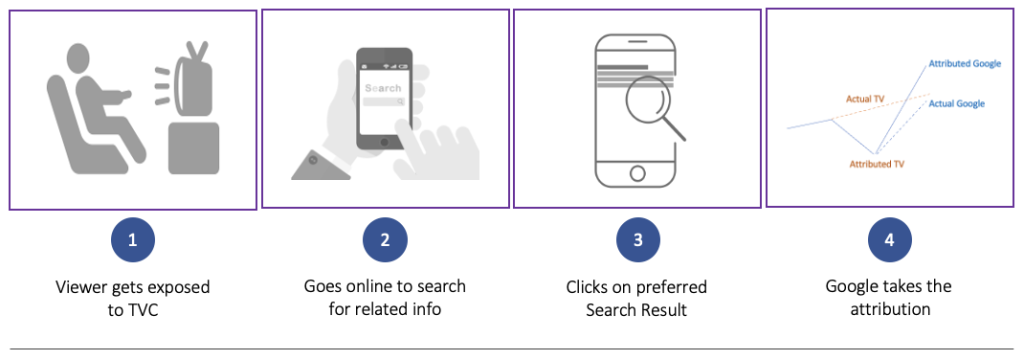This is part 1 of 3 parts series in which we will try and explain what is TV Analytics, methods to Base Line Corrections and related use cases of TV analytics.
TV analytics and TV attribution are two terms that are sometimes used in marketing management jargon and can seem a bit obscure to some. However, they are not as complicated as they might appear. In this article, we will provide a brief overview of what these terms mean and why they are important.
Firstly, what is TV analytics? It refers to the process of collecting and analysing data related to television viewing. This can include information such as who is watching a particular program, at what time, and on which device. This data can then be used to gain insights into audience behaviour and preferences, which can help businesses make more informed decisions about their marketing strategies.
TV attribution, on the other hand, is the process of tracking the impact of TV advertising on consumer behaviour. This involves analysing data to determine how much of a specific outcome, such as website visits or product purchases, can be attributed to a particular TV advertisement.
So why are TV analytics and attribution important? Firstly, they provide valuable insights into audience behaviour, which can help businesses better understand their target market and tailor their advertising accordingly. Additionally, by tracking the impact of TV advertising, businesses can determine the effectiveness of their campaigns and make data-driven decisions about future advertising investments.
In conclusion, TV analytics and attribution may seem like complicated terms, but they are important tools for businesses looking to gain insights into audience behaviour and track the impact of their advertising campaigns. By utilizing these tools, businesses can make more informed decisions and improve the effectiveness of their marketing strategies.
Why use TV analytics?
Well, short answer is to measure the impact that linear advertising has on business KPIs by producing digital quality data for TV advertising. Advertisers with TV analytics can get real-time insights into TV media performance based on its impact on business KPIs and not at the overall levels but get much granular details like which tv channel, time-band, creative, weekday, combination outperforms the rest to implement and drive incremental impact.
But then also to measure and control over-attribution to digital media platforms potentially avoiding the optimisation of only the later (digital platforms) basis the over indexed performance data.

Most measurement companies offers solutions to measure, optimise and scale digital media without taking into account the impact from linear advertising (unaddressable) only to realise that when recommendations are implemented, actual results begin to fall apart from the data driven simulations in the absence carefully attributed TV data
That is why we created SYNC OS for Video Advertising, truly device & platform agnostic solution to measure, attribute and optimise video spends across linear and digital landscapes.
Why it works?
Because “more than 80% of viewers today use another screen in front of the television*“
This increase in online activity during and after TV advertising has given rise to TV analytics. Advertisers now have access to a wealth of data that allows them to measure the effectiveness of their TV campaigns in driving website or app visits, engagement, and sales. By using tools such as attribution models and website/app analytics, advertisers can track the customer journey from TV ad exposure to website or app visit to conversion.
Clients can use this data to optimise their campaigns in real-time, adjusting their media buys and creative to maximise ROI. With TV analytics, advertisers can gain a more comprehensive understanding of the impact of their TV campaigns on their overall marketing performance.
That is why we perfected the recipe with SYNC OS
We begin by placing trackers on the advertiser’s website to monitor traffic or interactions thereof (or collect indexed data for the corresponding KPI) and isolate the spikes that can be attributed to television. This is of course in addition to technology that can detect the airing of each TV commercial in real time. Then we go on sprinkling some gold standard algorithms capable of determining what the advertiser’s traffic curve would have been without the TV ad (called the “baseline”). We let it to chill for a few additional minutes while we precisely estimate the impact time while quantifying the impact itself of your TV advertising.
And there you have it, incremental TV reach response!

When can we expect the part II of this series. I am keen to understand this subject and looking forward to reading it. Thanks!